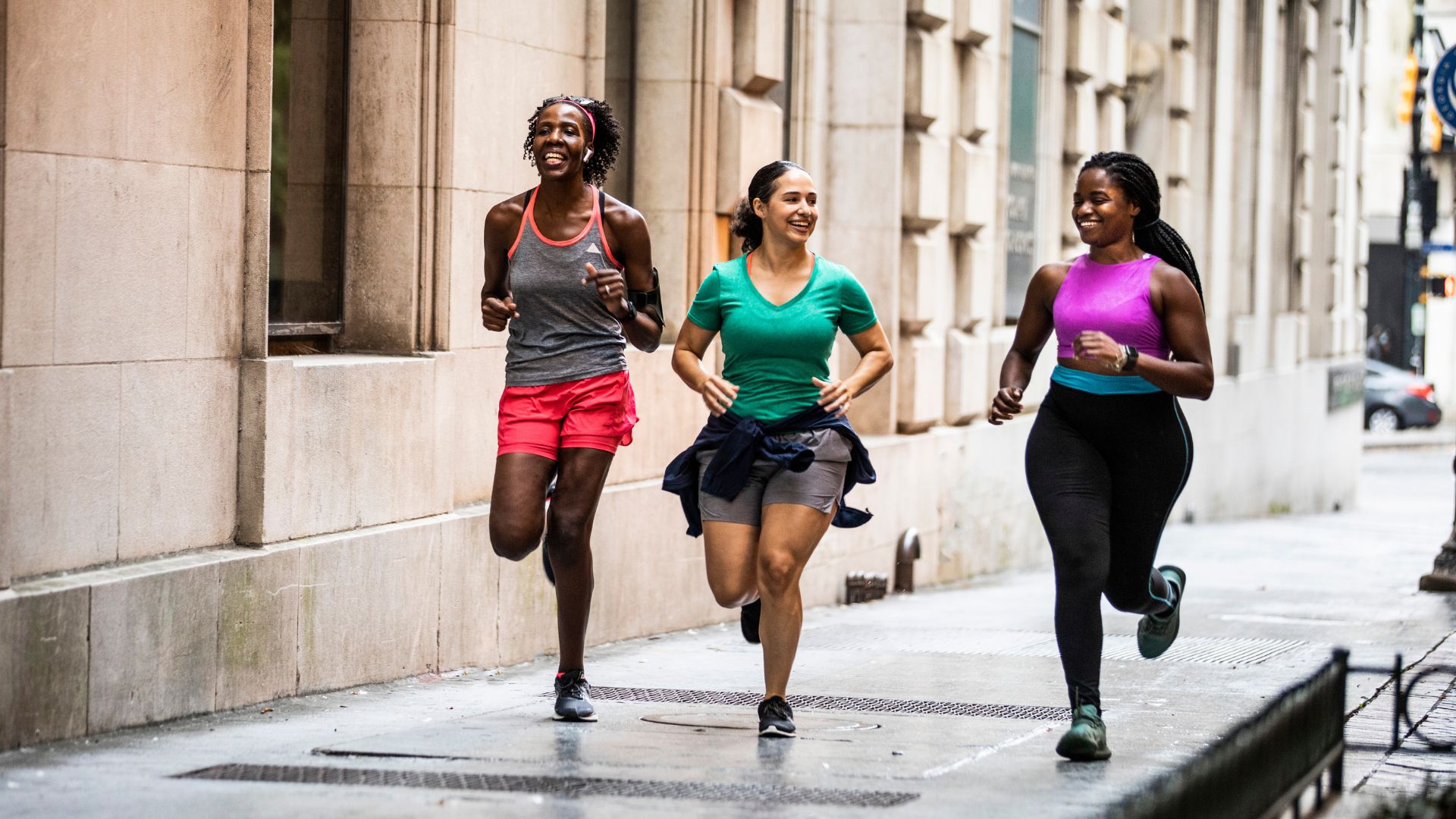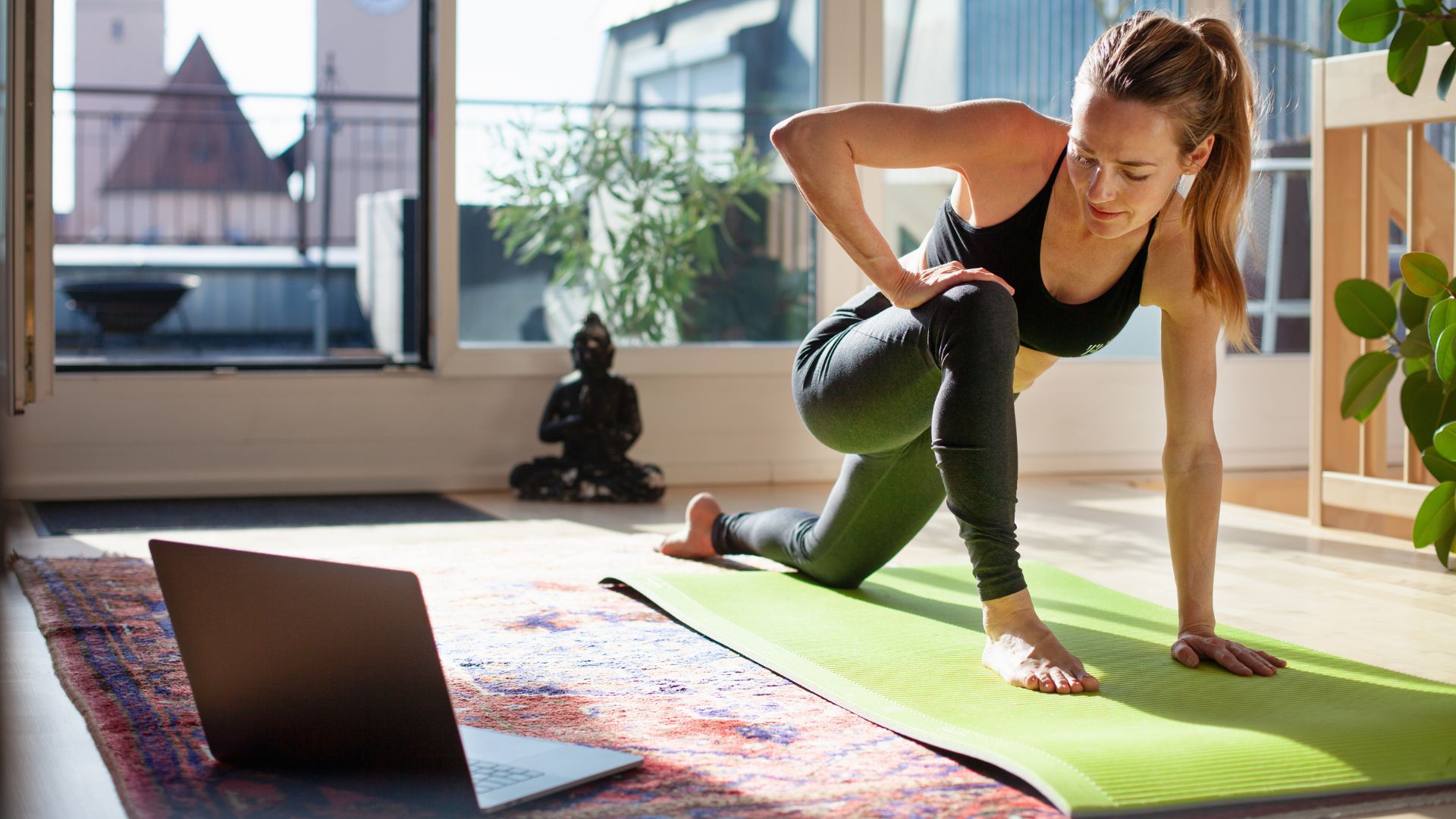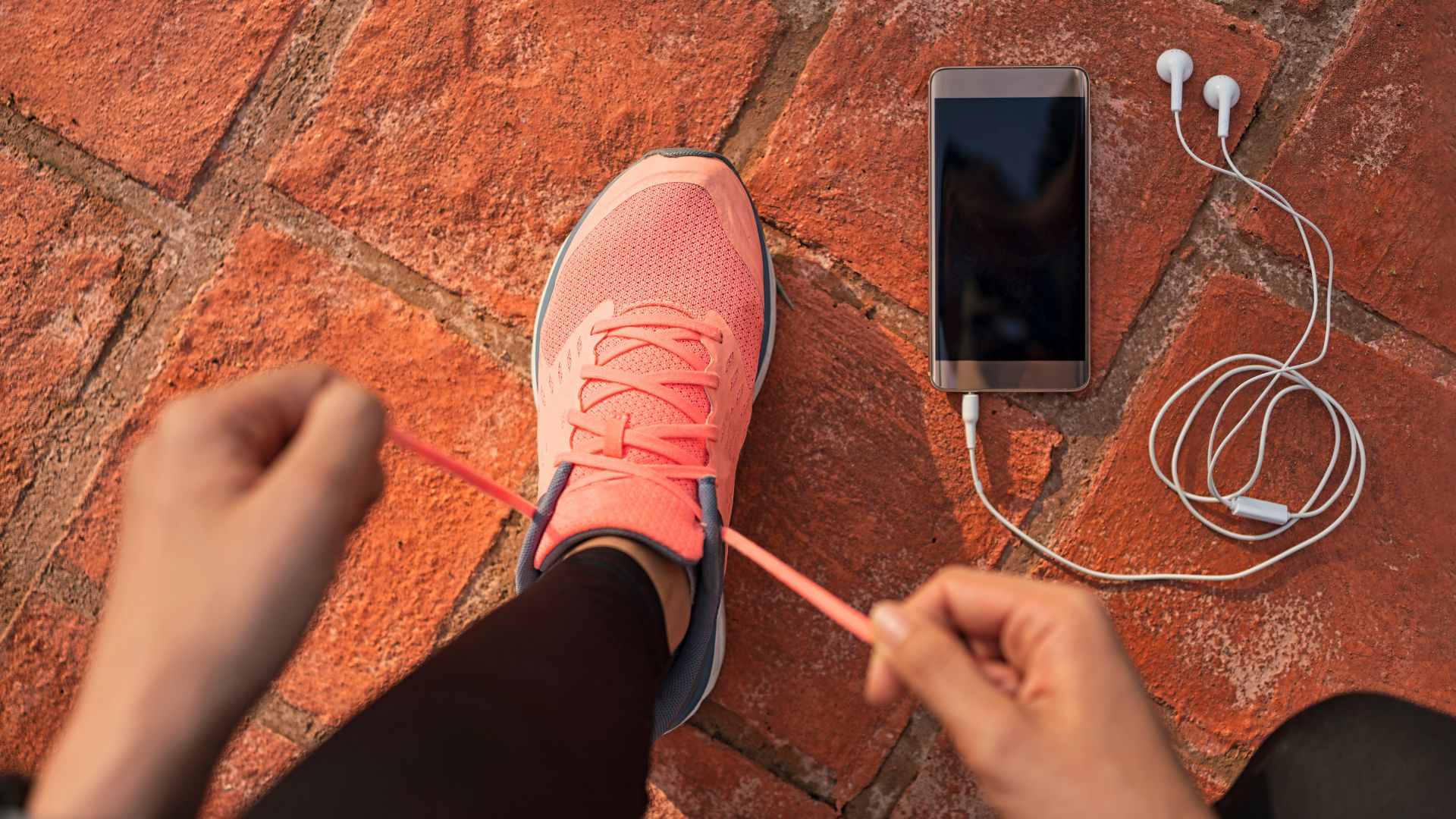Should I run every day? Coaches reveal the top mistakes you could be making with your training
Should I run every day? Beginners make mistakes when they start running, here coaches reveal the big ones to avoid


Should I run every day? New runners tend to make several running mistakes when they first lace up their trainers. From going too fast too quickly to not having the right gear, if you’re ticking these issues off as you read, you’re certainly not the only one. To help you get back on track, we’ve outlined each of the issues that could be causing you problems and enlisted a team of running coaches to help solve them.
Running is one of the more cardio-intensive sports out there and it’s also one that we’re often not taught how to do correctly. While we learn how to play many sports at school or hire a personal trainer if we want help in the gym, running seems like something that should come naturally to us. But that’s not always the case and missing the running essentials can lead to a slow start at best and injury at worst.
If you want to know how to start running or improve your technique, whether you’re running for fun, fitness, or running for weight loss, we’ve got you covered here at woman&home. We’ve enlisted the help of several running coaches to share the mistakes they see most often when it comes to beginners and reveal how to fix them for better form, technique, performance, and most importantly, enjoyment of exercise.
Should I run every day?
No, you shouldn't run every day and this is the number one mistake beginners often make when they start running, the coaches agree. "We see runners who run too fast or too hard, and far too often," says Lewis Moses, a former British 1500m champion and now running coach. "This can hurt your running style, as your running form starts to deteriorate as you become fatigued."
Wanting to run all the time is perfectly understandable though - it's not called the 'running bug' for no reason after all, says Arj Thiruchelvam, a running and performance coach who specializes in training athletes, but it's important to temper your workout motivation at the start of your running journey. “It sounds odd to say that, but most people get injured early on because they get the bug to run and go from zero to running hero, racking up all the miles.”
If you've started off running a bit too quickly and now you're experiencing the side effects rather than the benefits of running, don't worry, it's not too late to change your pace. "By running slower on easy days and introducing things such as interval training into your program, you can vary the intensity of your training and work on running faster, while also working on that running form," says Moses, who is also the running advisor to INCUS Performance and the founder of New Levels Coaching Ltd.
You should also think about the miles you're getting in during the week and how quickly you're trying to improve, adds Thiruchelvam, who is also the owner of Performance Physique. "Think about increasing your mileage and running pace very gradually rather than all at once," he suggests. "Ideally, focus on adding a mile or two per week or run a little faster, never both at the same time."
Sign up for the woman&home newsletter
Sign up to our free daily email for the latest royal and entertainment news, interesting opinion, expert advice on styling and beauty trends, and no-nonsense guides to the health and wellness questions you want answered.
Top running mistakes to avoid
1. Not following a running schedule
There’s nothing wrong with just going for a run as and when you feel like it but not following a specific plan could mean you end up running every day or never at all - depending on how strong your motivation is.
In general, running between two to three times alongside other training should be enough exercise for the week. One way to make sure you get this right is to set a running schedule.
“Work out a weekly schedule or get a coach to write one for you,” Thiruchelvam says, pointing to the best running apps as a great resource for this. “Having a structure in place helps in a multitude of ways. Whether you want to go running 30 minutes a day or just a couple of times a week, it'll pay off. As humans, we love structure and it’s no different with our physical activity. It will mean you can see what you’re working towards, allowing you to plan and keep yourself accountable.”
This will also help if you’re someone who tends to put off a run after a late night or long day at work. “When the days get busy or you’re feeling a little lethargic, knowing you’ve said you will do something has a surprisingly strong effect on making you go out and exercise despite your levels of motivation.”

2. Not doing enough strength training
If you’re someone who’s been injured a lot recently or your muscles get tired easily when you run, and you’re not doing any strength training, this could be your main issue. Research from Lillehammer University College shows that strength training can have numerous benefits for runners, such as reducing stiffness in the lower muscles and tendons.
“The majority of runners just want to run and they neglect their strength training,” says Thiruchelvam. “However, gym and circuit training can not only make you a better runner, improving your speed, technique, and power, but it’s vital to make you resilient and reduce your chance of injury.”
The best way to incorporate resistance training into your schedule? “Include a minimum of one session per week,” the coach suggests.
3. Not having the right technique for you
There's no such thing as the 'right' technique overall because everyone will be different, says Moses. "However, having an efficient running technique or good running form can contribute to improved performance, particularly when it comes to performance indicators such as running economy." This is the relationship between the amount of oxygen you consume for the speed you're moving at and to 'run economically' means not to waste too much energy.
As well as having more energy though, missing out on good technique means you could be more prone to injury. "This is always a struggle for runners with three out of four reporting some type of injury each year," he adds. "Bad running form and particularly poor posture can increase the chance of injury, so working on developing better form can help runner stay injury free."
The main tips for good running technique include:
- Look ahead: The temptation can be to look at your feet while you run, so try to pick a point in the distance and keep your eyes on it as you move.
- Keep your hands at waist level: They should be bent at a 90-degree angle, and make sure they don't make their way up to chest level as you get tired.
- Make sure your hands are relaxed: Avoid bunching them up into fists while you're running, as the strain from doing this will move into your neck and shoulders, creating an uncomfortable position for you to move in.
- Check your posture: Your head should be up, your neck straight, and your shoulders should be level. Keep an eye on where your shoulders sit, relax them if necessary, and make sure you're not leaning too far forward or backward.
3. Not doing any cross-training
However, trying to force these points could lead to you exaggerating your running style and you could end up with more issues than you started with. "For example, some people try to lengthen their stride just by thinking about it," explains Moses. "For me, it's more important to work on all the elements which underpin the running stride, which will in turn help to increase the stride length."
This is where cross-training, where you include lots of different types of training into your routine to develop a wider set of skills, could be essential. If you're looking to improve your stride length, you might work on flexibility for example with some yoga for beginners, or balance with strength training for Pilates.
"With the runners we coach, we'd be looking at improving their strength, conditioning, and mobility, as well as adding running drills into their plan so they can work on fundamental movement patterns, which will help with small improvements over time."
You could also mix things up with cardiovascular exercise. For example, in the cycling vs running debate, running will always be more efficient but cycling has less of an impact on the joints.

4. Sticking to the same speed and distance for every run
Variety is the spice of life, the saying goes, and it’s certainly one that applies to running. “Many people just want to improve their performance over a certain distance and to do this, they perform this distance with their maximum effort, every single time they go running," Thiruchelvam explains, "For example, they might attempt to run a 3.5 mile personal best three to four times per week. Whenever you’re tempted to do this, just think, do the pros do this? No, they don’t.”
Instead, taking the 3.5 miles as an example, “focus on improving speed with one or two fast training sessions made of repetitions or intervals of short distances like 200 to 800m. The rest of the week is formed of ‘easy pace’ running, going really slowly with the goal of recovering fully and improving the body’s ability to transport oxygen to the muscles,” he says. It might be easier to weigh up running on a treadmill vs outside and head inside for this type of training too, where you can better manage your speed.
5. Not fueling up properly before your run
Deciding whether you should eat before or after a workout, what to eat, and then how you'll run based on that is a delicate job. If you eat solid foods moments before your run, you're likely to get a stitch and feel uncomfortable. But if you eat hours ahead of your run, you could find yourself tapping out further down the line.
"Hydration and food are vital for our athletic performance," explains Signe Svanfeldt, a nutritionist. "Food provides us with energy and nutrients to support our bodily functions. For optimal performance, it is beneficial to provide our bodies with carbohydrates for quick, accessible energy, and protein to nourish the muscles."
For the best chance at getting it right and avoiding problems, try to eat two hours before you plan to go running and if you think you might get hungry, take some quick liquid carbohydrates with you - like an energy gel.
Svanfeldt, who is also the lead nutritionist at the healthy eating app Lifesum, says to monitor your meal timings and also watch what you eat before your run. "If you eat a smaller snack close to a workout, aim for easily digestible foods rich in carbohydrates and protein. Fibre-rich foods and foods high in fat can delay digestion and cause an upset stomach, so it may be wise to avoid those types of foods close to working out," she says.

6. Not having the right kit
While you can technically run in anything, that doesn't mean you should run in anything and you'll certainly be experiencing some issues if you're missing some of the best running gear for the type of running you do. "Getting the right pair of trainers is essential, considering the number of steps we take as well as the forces we generate and put through the ground when we run," says Moses. Investing in a good pair of leggings can help, as can knowing how to clean running trainers if you've invested in a pair of the best running shoes for women this year.
"Research from Queen Margaret University suggests the most important part of shopping for the right trainer comes down to comfort more than anything else but I would say finding out how you land is also very important," he adds. "Getting the right support from the right trainer can help with your running gait and help to prevent injuries. Pronation, for example, is a good thing but over-pronation can lead to problems and some trainers would support an issue like this, which is why it's important to find out how you run."
5. Not keeping track of your progress
This is one of the biggest mistakes you could be making if you struggle with motivation to work out in winter, for example, how else will you know if running is good for you personally? Keeping track of progress is something that athletes the sports world over do to make sure they’re growing and developing in their sport, from hikers who record the mountains they’ve climbed to weightlifters who record how many reps they can do.
Seeing how far you’ve come since you started running can be a great way to boost your energy levels and push yourself toward your goals.

Grace Walsh is woman&home's Health Channel Editor, working across the areas of fitness, nutrition, sleep, mental health, relationships, and sex. She is also a qualified fitness instructor. In 2025, she will be taking on her third marathon in Brighton, completing her first ultra marathon, and qualifying as a certified personal trainer and nutrition coach.
A digital journalist with over seven years experience as a writer and editor for UK publications, Grace has covered (almost) everything in the world of health and wellbeing with bylines in Cosmopolitan, Red, The i Paper, GoodtoKnow, and more.
-
 We're in awe of Sienna Miller's easy-going and 'piece-y' hairstyle and how perfect it is for spring
We're in awe of Sienna Miller's easy-going and 'piece-y' hairstyle and how perfect it is for springThis laid-back hairstyle is - quite literally - making waves this season
By Naomi Jamieson Published
-
 We never thought we'd see this 'dated' manicure make a chic comeback, but here it is - and we're on board
We never thought we'd see this 'dated' manicure make a chic comeback, but here it is - and we're on boardClean and angular, short square French tips are a go-to this season for a practical but stylish manicure...
By Naomi Jamieson Published